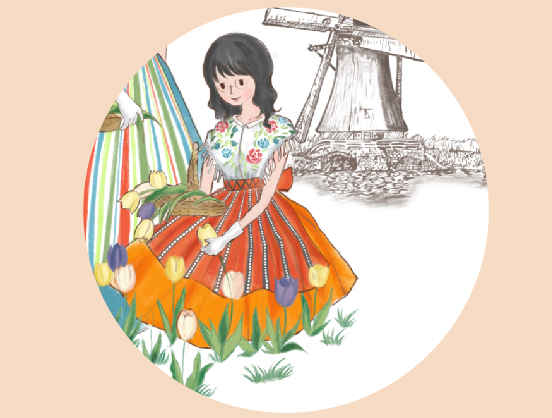
My name is Tzu-Jou, a second-year master student in the Industrial Design faculty of Eindhoven University of Technology (TU/e). Before coming to TU/e, I earned a bachelor's degree in industrial design in Taiwan. Previously, in terms of the aesthetic form of design, I enjoy doing some crafting, such as woodcraft modeling and ceramic crafting, both outside and inside the university. All of these practices, I believe, can shape my senses in creating design with an aesthetic. Aesthetics is also something that I believe is important for people in today's society to help shape and display their identity.
On the other hand, since my bachelor period, I've been interested in how design can improve people's lives. I was also involved in a number of projects relating to the aging population, healthcare, and disabled groups. Throughout those projects, I realized that a design can truly bridge the gap between different user groups' needs, assisting people in learning and exploring themselves by serving as an effective communication tool. In my bachelor period, I spent one year in Barcelona, Spain, studying and doing an internship. This experience further allows me to learn how creativity and aesthetics can be integrated into people's lifestyles and contexts. Among these, a food design course inspired me the most, in which I explored the relationship between food and person using a tangible design approach.
Additionally, I enjoy exploring/defining problems. I am sensitive to the details of life. In that sense, I am able to be inspired by everyday activities. I am convinced that sometimes the problem is more important than the solutions. A quote from Henry Ford: “If I had asked people what they wanted, they would have said faster horses.” Customers/clients can describe what kind of solutions they want, while a designer can help redefine the real problems behind it and further reconstruct those recognized critical elements. In addition, I have learned that asking the right question is essential.
Thinking about design applications, I realize that there are many relevant applications that use various kinds of design methodology to explore/define the critical relevant components with the stakeholders, And further by incorporating technical knowledge, such as the Internet of Things (IoT) and even Artificial Intelligence (AI). This can together help to create a more sustainable experience by exploring Human-Computer Interaction (HCI). Concerning my background and characteristics, the two main expertise areas that I would like to further develop as an industrial designer's unique profile are User & Society (U&S) and Creativity & Aesthetics (C&A). At the same time, I would also love to explore how the emerging technology (Technology & Realization) and the rich data (Math, Data, and Computing) can assist the design for more sustainable and innovative purposes.
Link to identity and vision
I am a human-centered designer. Studying the users’ needs, values and the relationship between the environment, is always important in my design research process.
Development
the courses User Experience Theory and Practice and Design for Behavioral Change allows me to learn that user evaluation methods and theories that can be applied in an user-centered design process. Throughout other projects I learned that every project could need different approaches to include the user’s point of view. I also learn that the good communication with the user/stakeholders are important for them to make sense their experiences/feelings.
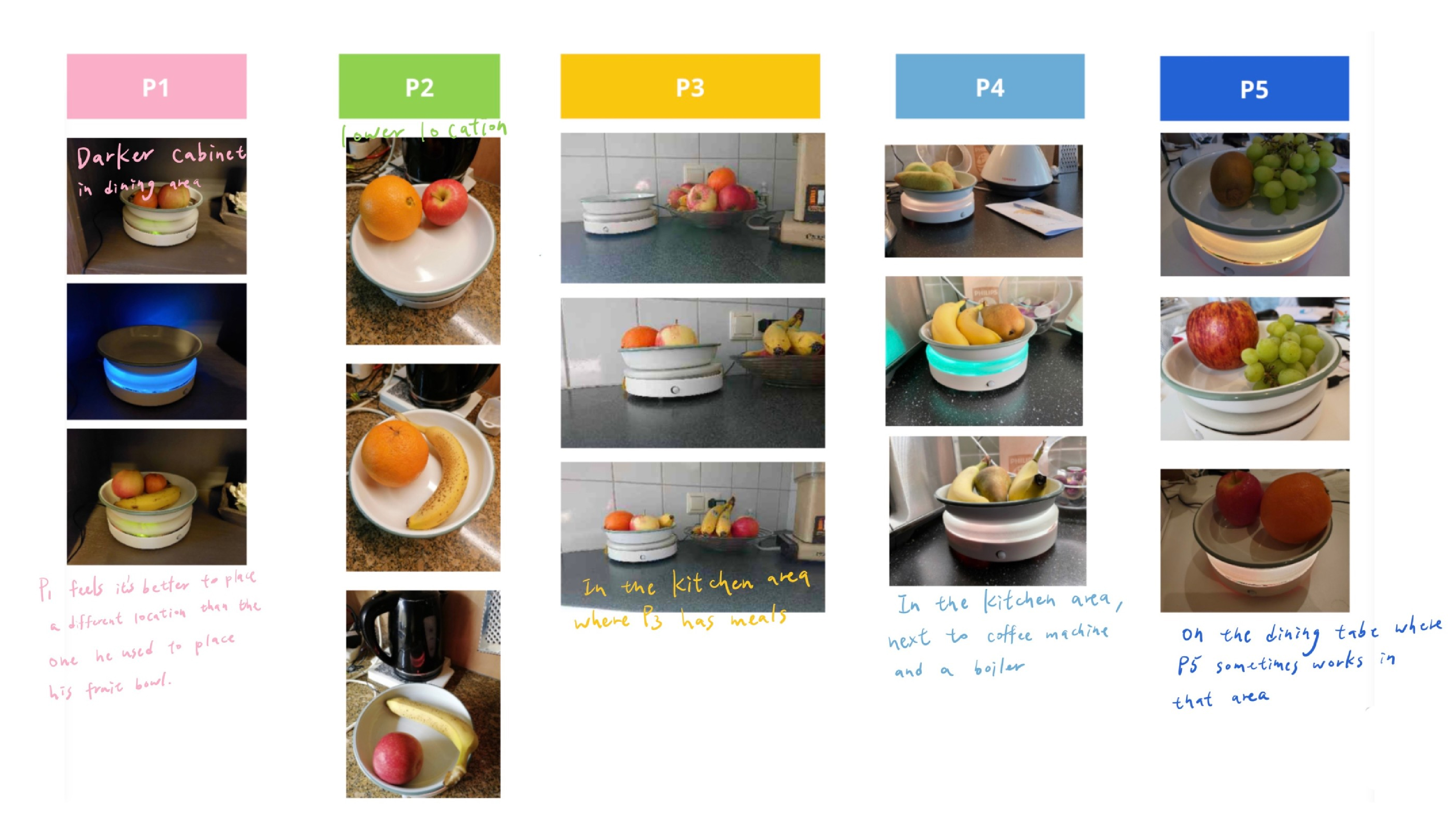
Understanding user’s contextualized scenarios using diary methods in my graduation project.
Link to identity and vision
Good communication is essential when working together with users and other stakeholders, Thus, I always strive for creating nice communication tools. In addition, I believe C&A can drive the design to create sustainable values for the user and society and with the opportunity to trigger user’s reflection over a certain issue.
Development
Within the course Interactive Materiality & The sound of smart things I learn to translate the relationship between the human, the object, and the environment into meaningful communication by exploring with different modalities. Understanding the pros & cons of these modalities and then further constructing meaningful Interactions, and with the opportunity for longer-term maintenance.
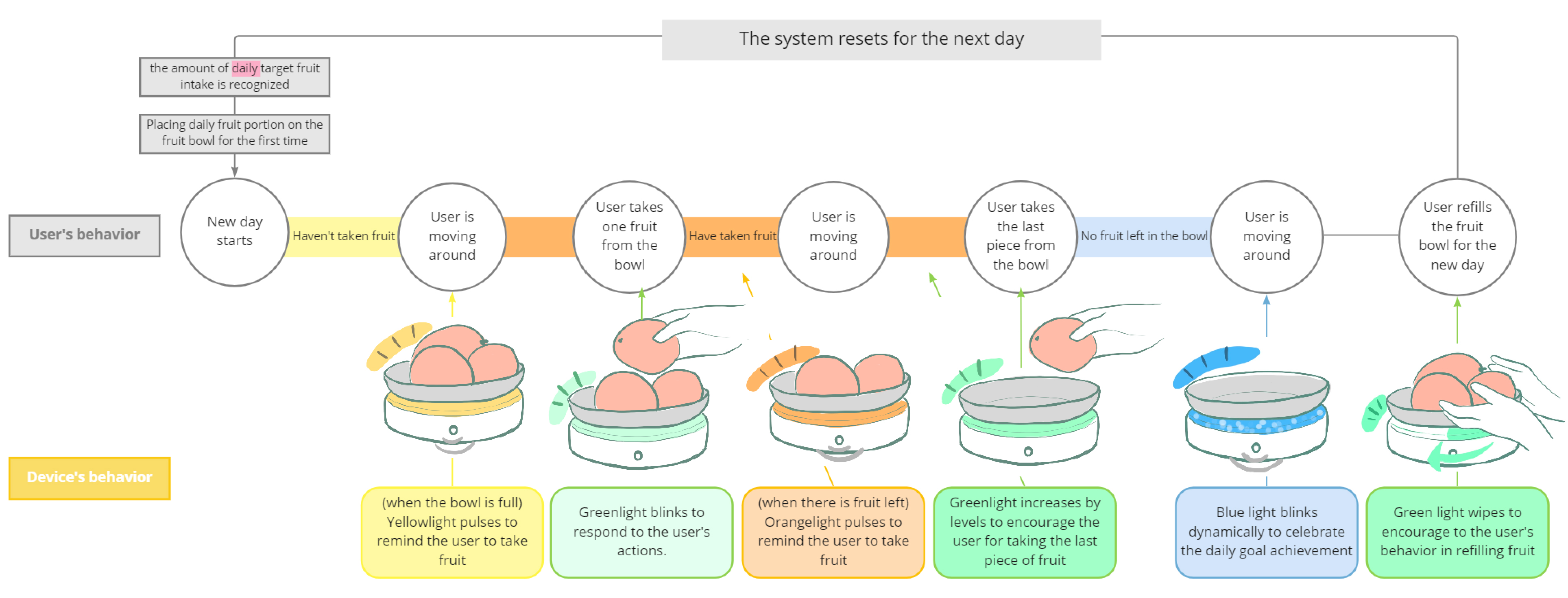
Developing pleasant and meaningful interaction based on C&A in my graduation project.
Link to identity and vision
For me T&R is about understanding the abilities and limitations of an technology to be able to collaborate with stakeholders or experts of relevant domains (engineer, data scientist) Furthermore, T&R enables me to create interactive prototypes with proper knowledge, which hosts a better user test that can help to gain insights into the users’ needs and satisfaction.
Development
Many of my followed courses (interactive materiality, designing UI with emerging technology, data-enabled design, design for behavior change) and projects (CoasterChat, Context Enquiry Study, Graduation Thesis Project) need to creat a physical prototype for the evaluation and discussion. Those were valuable experiences as it requires the technical knowledge (include the limitation) to construct the interaction to find out how users would respond to the that.

The experimenting process of developing a systematic working prototype for usability test (evaluation).
Link to identity and vision
Being a human-centered designer, I often work with qualitative research methods to learn both from users and other stakeholders. As nowadays the application of technology tend to be data-driven I feel the need for designers to understand technologies and be able to translate the collected data into meaningful story.
Development
To gain more knowledge how to design for data-driven technologies, I followed the Lab study in Constructive Design Research the course Data-Enabled Design in my first year. This taught me about the Data-Enabled Design process and the importance of combining both qualitative and quantitative data to support the arguments and findings.
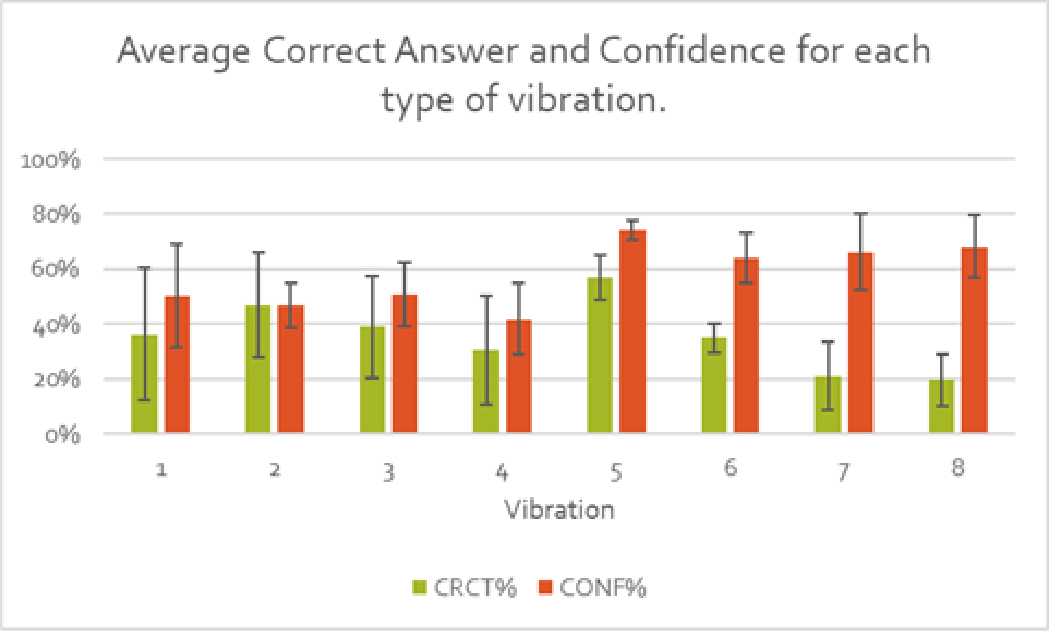
Data-driven analysis in course CDR.
Link to identity and vision
I like to work with and for people, so B&E is more about stakeholder management. When working on every projec this capetence helps me dive into the new stakeholder environment and understand different values (e.g. participatory design) The B&E also help me better draw requirements from the stakeholders. I value sharing the expertise knowledge in the design process with users and stakeholders in the design process.
Development
Working with different clients/stakeholders throughout my Masters period along with some small side projects, I have learned about the diversity of organizations and stakeholder networks. I learn to be flexible to work with people and structure the communication contents nicely.
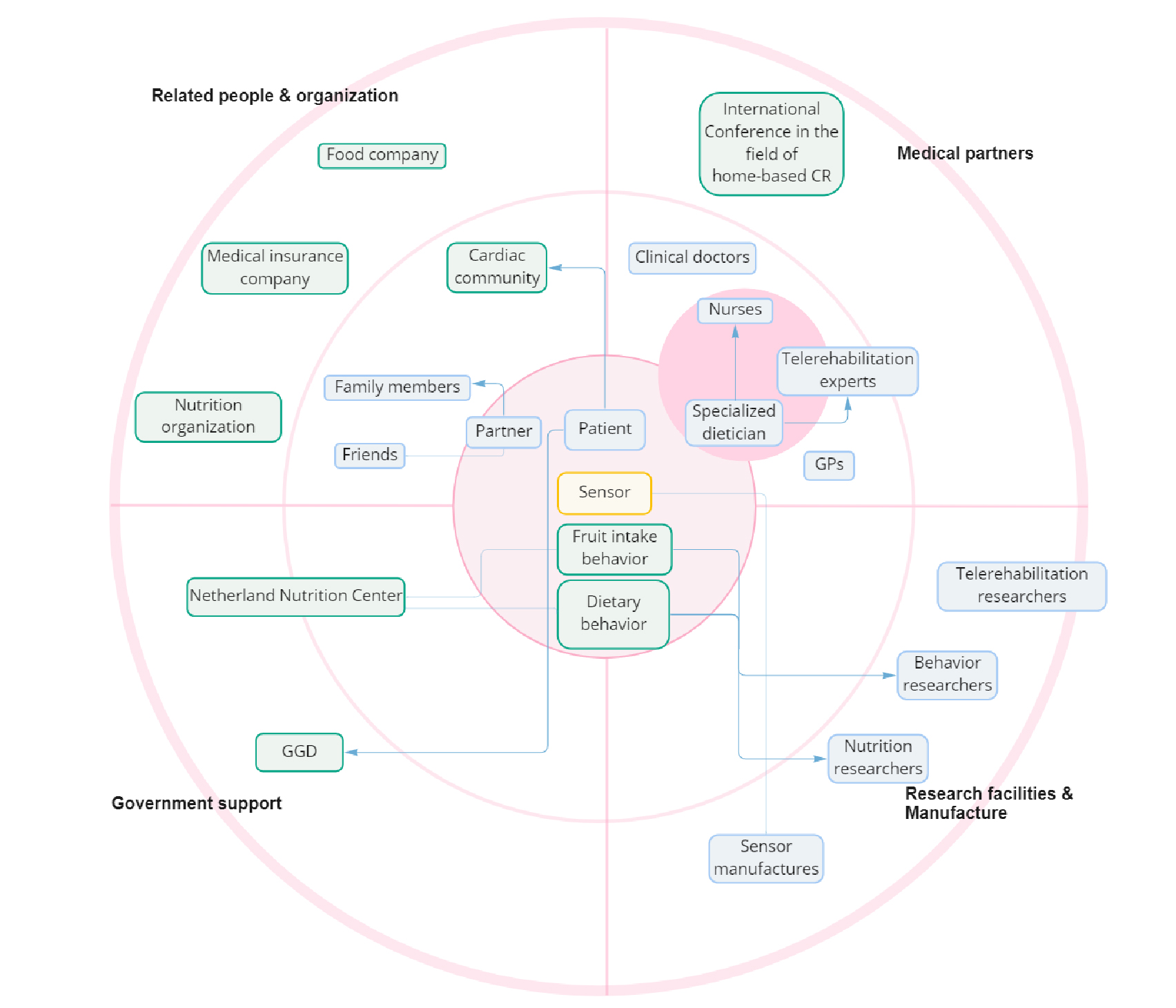
Ecosystem map constructed for creating possible relevant services in my graduation project
Link to identity and vision
I strive for the optimal user experience by applying qualitative design research methods to learn from both users and other stakeholders. It‘s important to explore the proper methods for every design process. I value sharing and integrating perspectives throughout the design process with users and stakeholders.Furthermore, I find the values in researching Human-conputer interaction to explore the role of an emerging technology into people’s ways of living.
For my strengths, I think I’m open-minded and willing to try new things, and comfortable taking advice from others. Besides, I wouldn't mind taking criticism. I feel grateful for those who would take the time to check my projects and share their advice. Because it's always important in an evolving process and this can often produce positives in the end. As for my weakness, I used to be quite a shy girl. Taking initiative during a conversation was never what I was good at. But once realizing this can limit me from sharing and communicating ideas, I tried very hard to improve it. For instance, I might spend time learning the knowledge from the relevant topic so that I could have more knowledge base to express myself and discuss with others with different backgrounds.
For the future development of my career (for example, working in a company), I would like to apply the knowledge that I learn and practice throughout my master's program. For instance, user study can help with the connections and empathy between all the stakeholders. My expertise area in C&A can help to communicate my idea to others in a more effective and pleasant way. Whereas, fro the equipment of other expertise areas could enable me to take more perspectives in developing an idea, and meanwhile, able to collaborate with other experts.